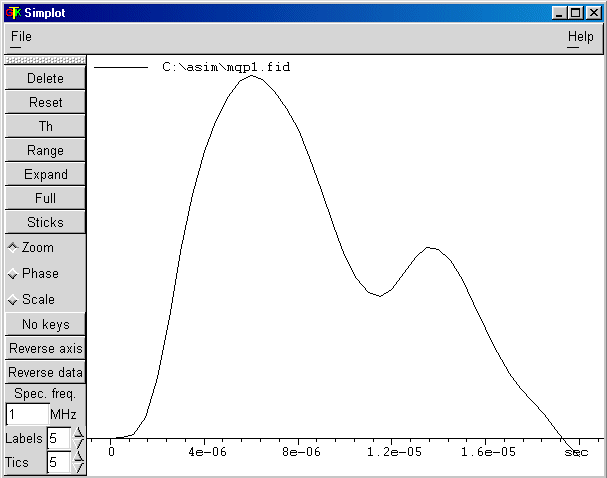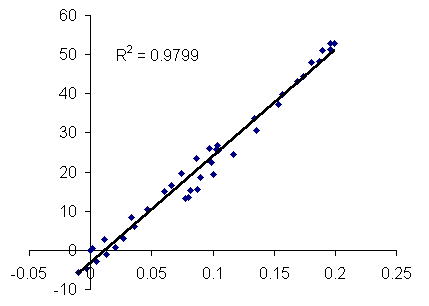We have simulated the same experiment as that described in Example 1 using SIMPSON version 1.1.0, a general simulation program for solid-state NMR spectroscopy provided by M. Bak, J. T. Rasmussen, and N. C. Nielsen, J. Magn. Reson. 147, 296-330 (2000).
*****Simpson 1 for MQMAS*****
# mqp1.in
# spin-3/2 echo amplitude optimization
# with p1 in MQMAS sequence
spinsys {
channels 23Na
nuclei 23Na
quadrupole 1 1 1e6 0 0 0 0
}
par {
spin_rate 10000
variable tsw 0.5
sw 1.0e6/tsw
np 41
crystal_file rep320
gamma_angles 10
start_operator I1z
verbose 1101
variable rf 100000
proton_frequency 400e6
}
proc pulseq {} {
global par
maxdt $par(tsw)
matrix set 1 elements {{4 1}}
matrix set detect elements {{2 3}}
acq
for {set i 1} {$i < $par(np)} {incr i} {
pulse $par(tsw) $par(rf) x-pulse
store 2
filter 1
pulse 1.5 $par(rf) x-pulse
acq -y
Reset
prop 2
}
}
proc main {} {
global par
fsave [fsimpson] $par(name).fid
puts "Larmor frequency (Hz) of 23Na: "
puts [resfreq 23Na $par(proton_frequency)]
}
|
****Comment****File name. Description. Spin I = 3/2. 1st-order quadrupole interaction, qcc = 1 MHz, eta = 0. 10 kHz. 0.5 µs increment. 1st pulse: 20 µs. 100 kHz RF pulse. 0.5 µs increment. -3Q from the 1st pulse, density matrix convention. Central transition, fictitious spin-1/2 convention. No pulse, no signal. 1st x-pulse is variable pulse. Save propagator at the end of 1st x-pulse. Select -3Q coherence. The 2nd x-pulse has 1.5 µs dration. Receiver -y. Reset propagator to initial value. Recall the propagator at the end of the 1st x-pulse. |
SIMPSON uses gyromagnetic ratios provided by IUPAC for the determination of the Larmor frequency of a nucleus. For example:
23Na Larmor frequency = Proton Larmor frequency * 23Na gyromagnetic ratio / Proton gyromagnetic ratio;
400 MHz * 7.0808493 / 26.7522128 = 105.8731007 MHz.
This curve represents the simulated central-transition echo amplitude versus the first-pulse length p1 with SIMPSON for a spin I = 3/2 system excited by the MQMAS sequence.


This figure represents the correlation curve relating two simulations generated with SIMPSON (Simpson 1) and JDK1.3 Java applet (Example 1) for the MQMAS sequence applied to a spin I = 3/2 system.
